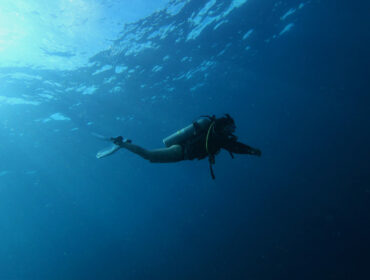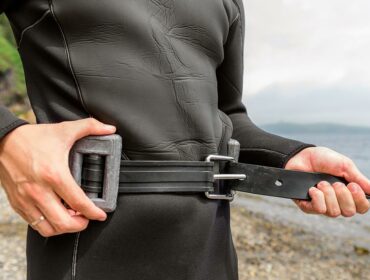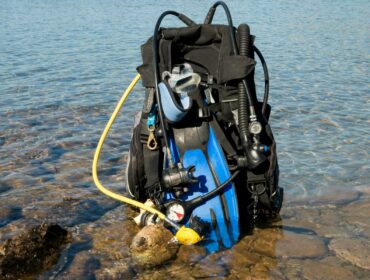Ever watched scuba divers on TV and marveled at how they seem to float effortlessly in the mesmerizing blue? That’s not magic — it’s the magic wand of the diving world, the buoyancy compensator! Think of a scuba BCD like the training wheels on a bicycle, helping divers maintain balance underwater. Intrigued? Let’s deep dive!
What is a Buoyancy Compensator?
Just as birds have wings to glide, divers have the Buoyancy Compensator (BC) or a Buoyancy Control Device (BCD). In simplest terms, it’s a vest that divers wear, allowing them to either float, sink, or hover at a certain depth.
The BCD is a piece of scuba diving gear that allows divers to manage their buoyancy underwater. It helps divers stay afloat on the surface, descend when they want to dive deeper, and achieve neutral buoyancy at any depth.
At its core, a BCD controls air. Add air, you ascend. Release air, you descend.
BCD Components
Whether you’re a seasoned diver or someone who’s just dipping their toes into the world of scuba, understanding the BCD’s components can greatly enhance your underwater adventures. Let’s understand the parts that make up this essential piece of gear.
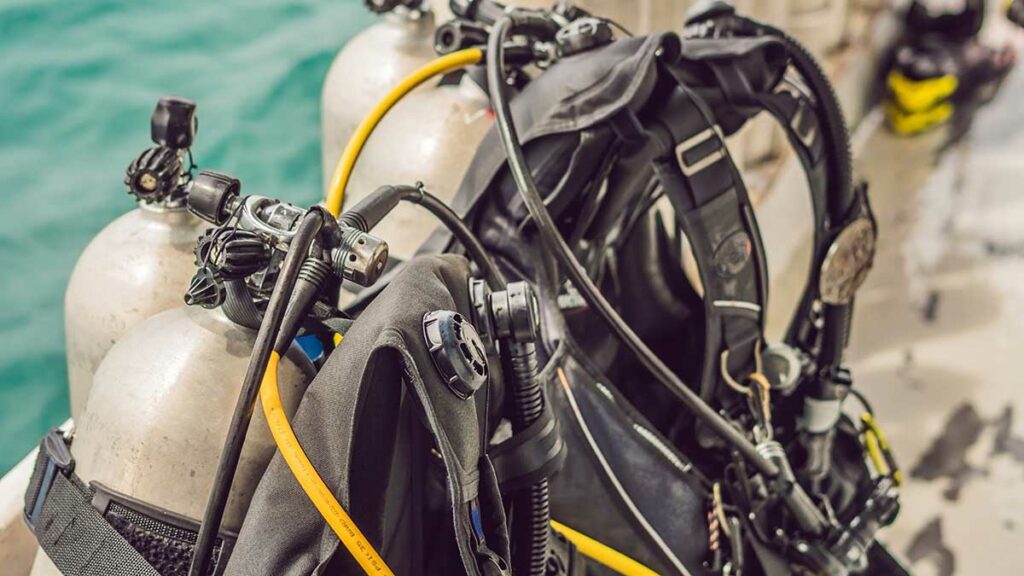
1. Bladder
Starting with the heart of the BCD, the bladder is an inflatable sack that holds air. By inflating or deflating the bladder, divers can adjust their buoyancy, making it easier to rise, descend, or stay neutrally buoyant underwater.
2. Inflator Mechanism
On the left side of your BCD, you’ll find a hose known as the inflator mechanism. This handy tool has a few buttons:
- Inflate Button: Pumps air from your tank into the bladder, allowing you to rise or stay afloat.
- Deflate Button: Releases air, helping you to descend or adjust your buoyancy underwater.
Remember to make small adjustments – it doesn’t take much air to change your position in the water!
3. Dump Valves
Now, what if you want to release air from your BCD without using the inflator mechanism? That’s where dump valves come into play. Located at various points on the BCD (usually the shoulders and lower back), these valves allow for a quick release of air, which can be especially useful in emergencies or when adopting different diving positions.
4. Harness
Think of the harness as your BCD’s skeleton. The harness ensures the BCD fits snugly and comfortably. It includes:
- Shoulder Straps: For a secure fit
- Chest and Waist Straps: These offer additional security and help distribute the weight
- Backplate: Often found in back-inflation BCDs, this provides rigidity and ensures tanks are securely attached
5. D-Rings
These little rings may seem insignificant, but they’re mighty useful. Made from sturdy metal, D-rings are attachment points where you can clip on your dive accessories, like flashlights, underwater cameras, or even your octopus (the spare regulator, not the sea creature).
6. Integrated Weight Systems
Gone are the days when divers had to wear bulky weight belts. Many modern BCDs come with integrated weight pockets. These allow divers to slide weights into the BCD, ensuring better weight distribution and a more streamlined profile underwater.
7. Tank Band & Buckle
Safety first! The tank band and buckle hold your air tank securely to the BCD. This ensures your tank stays in place, giving you a stable and comfortable dive experience.
8. Pockets and Storage
BCDs often come with pockets and storage spaces, handy for stashing smaller equipment like dive slates, masks, or snacks for the surface interval!
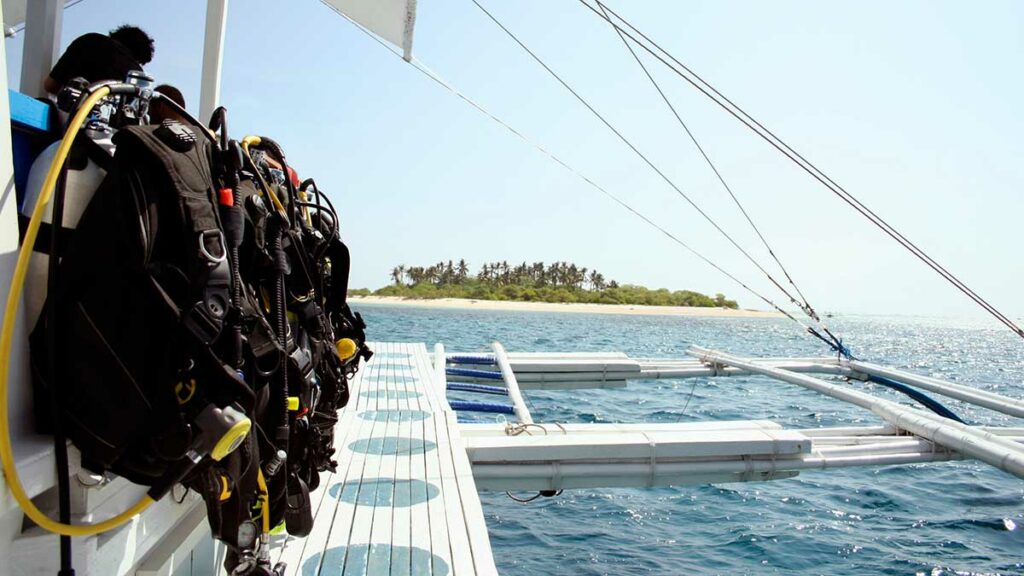
Types of Buoyancy Compensators
There are various types of BCDs, each designed to suit specific diving conditions and preferences. Brands including Cressi, Mares, Aqualung, Hollis, ScubaPro, Zeagle, and more, make some of the top BCDs on the market today. Ready to get the lowdown on the types of BCDs out there? Grab your fins, and let’s plunge in!
1. Jacket-Style BCD
Also known as the diving vest or the diving jacket, the jacket-style BCD is likely the type you first learned to dive with if you’ve taken an intro scuba course.
- Look and Feel: As the name suggests, it’s like a vest or jacket that wraps around your torso
- Buoyancy: Air is distributed evenly around your waist and back, making you feel hugged by the BCD
- Features: Typically comes with plenty of pockets and D-rings for your underwater accessories
- Best for: Best BCDs for beginners and recreational divers who want something familiar and comfortable
Jacket-Style BCDs at Scuba.com
2. Back-Inflation BCD (Wing-Style)
If you’ve ever seen a scuba diver who looks like they have wings, they’re probably wearing a back-inflation BCD.
- Look and Feel: Unlike the jacket-style, the air bladder in this type is located solely on the back, giving you a free and unrestricted feel around your waist and chest
- Buoyancy: Provides a more horizontal position in the water, which many divers prefer for underwater photography or marine life observation
- Best for: Intermediate to advanced divers who prioritize mobility and a streamlined profile
Back-Inflation BCDs at Scuba.com
3. Hybrid BCD
Can’t decide between jacket and wing-style? The hybrid BCD might be your match made in scuba heaven.
- Look and Feel: Combines features from both previous types
- Buoyancy: Offers a blend of the even buoyancy of jacket-style and the back-focused buoyancy of the wing-style
- Best for: Divers who want the best of both worlds!
Hybrid BCDs at Scuba.com
4. Backplate and Wing BCD
The backplate and wing BCD modular system is for scuba divers who love customizing their gear.
- Look and Feel: Comprises a separate backplate (often made of stainless steel or aluminum) and an inflatable wing
- Buoyancy: Like the back-inflation BCD, it promotes a horizontal trim in the water
- Customization: Divers can choose different wings for different dive scenarios (e.g., larger wings for technical dives with twin tanks)
- Best for: Technical divers and those who want a tailored dive experience
5. Sidemount BCD
These days, sidemount scuba diving is gaining popularity, and this BCD is designed specifically for that purpose.
- Look and Feel: Instead of mounting tanks on the back, they’re attached to the sides of the diver
- Buoyancy: Allows for a unique buoyancy profile and flexibility in the water
- Best for: Cave divers, those exploring tight spaces, or divers wanting to try a different configuration
Sidemount BCDs at Scuba.com
6. Travel-Friendly BCD
A travel-friendly BCD is a scuba diving vest designed for easy portability and storage.
- Look and Feel: Lightweight and compact without sacrificing necessary features
- Buoyancy: Designed for tropical diving and lighter dive gear
- Best for: Travelers and those who prioritize weight and portability
Travel-friendly BCDs at Scuba.com
7. Technical BCD
A technical BCD is a specialized vest designed to accommodate needs of technical scuba divers.
- Look and Feel: Robust and durable with extra attachment points and features for advanced diving needs
- Buoyancy: Built for carrying multiple tanks and heavy gear
- Best for: Technical divers taking on deep, long, or challenging dives
Technical BCDs at Scuba.com
Why is Buoyancy Control Vital?
The Role of BCDs in Safe Diving
Your BCD is not just a piece of equipment; it’s your lifeline underwater. Here’s why:
- Safety First: Achieving perfect buoyancy means reduced risk of accidents. Whether you’re avoiding fragile coral or preventing a rapid ascent, your BCD plays a pivotal role
- Enhanced Dive Experience: Neutral buoyancy lets you glide effortlessly, conserve air, and admire the marine life without disturbing the environment
- Equipment Management: BCDs come with pockets and attachment points. Want to stow away your underwater camera or torch? Your BCD has got you covered
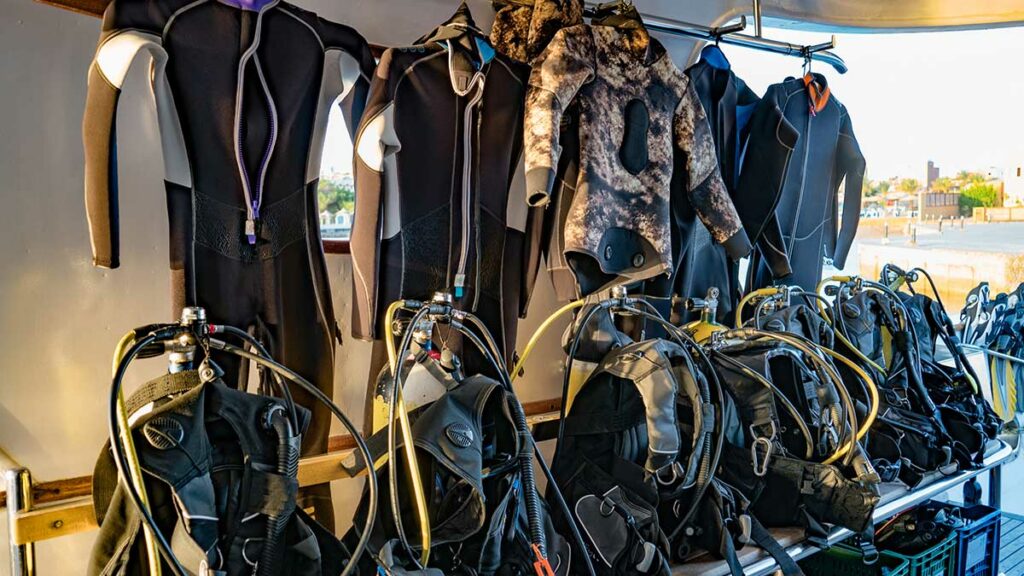
Factors Affecting Buoyancy
Let’s understand the elements impact your buoyancy control device (BCD) while scuba diving:
Density of the Water: Salt vs. Fresh
First things first, the water you’re diving in makes a difference. Seawater is denser than freshwater due to its salt content. This means if you’re diving in the ocean, you’ll naturally be more buoyant compared to diving in a freshwater lake. So, if you transition from sea diving to lake diving, you may need to adjust your BCD or add more weight.
Body Composition & Dive Gear
Yup, your own body plays a role! Fatty tissue is less dense than water, making you float, whereas muscle tissue is denser, causing you to sink. Plus, the type of dive gear you wear, from thick wetsuits to the material of your fins, can affect your buoyancy.
BCD’s Gas Volume
The primary purpose of a BCD is to let you adjust your buoyancy underwater. Inflating your BCD adds air volume, increasing your buoyancy and making you rise. Conversely, deflating reduces your buoyancy, causing you to sink. Remember, gradual adjustments are key!
Depth and Pressure
As you dive deeper, the increased pressure compresses the air in your BCD and wetsuit, making them less buoyant. As you ascend, the pressure decreases, and these air spaces expand, increasing buoyancy. This is why divers have to continually adjust their BCDs during a dive.
Breathing Technique
Believe it or not, your lungs act as natural buoyancy control devices. A full breath can make you more buoyant, while exhaling deeply can make you sink a bit. This doesn’t mean you should hold your breath (never do that while diving!), but being conscious of your breathing can help fine-tune your buoyancy.
Temperature of the Water
Cold water increases the density of your wetsuit or drysuit, affecting buoyancy. Also, in colder waters, you’re likely wearing thicker dive suits, which come with more trapped air, and therefore, more buoyancy considerations.
Weights and Distribution
Divers wear weights to counteract the buoyancy of their bodies and equipment. The amount and distribution of this weight can dramatically affect buoyancy. Too much weight and you’ll struggle to stay afloat at the surface; too little and you may find it challenging to descend.
Understanding and mastering buoyancy is like learning to ride a bike. It might be a bit wobbly at first, but with practice, it becomes second nature. Knowing these factors can help you anticipate and adjust for buoyancy changes, ensuring a safe and enjoyable dive.
How to Choose Your BCD for Diving
Just as every fish has its unique fin, every diver has a Buoyancy Compensator (BC) that’s just right for them. Let’s embark on a journey to find the ideal BCD for your underwater escapades.
1. Perfect Fit = Perfect Dive
It might sound obvious, but the right fit is crucial. You wouldn’t wear oversized flippers, would you? A well-fitting BCD ensures comfort, safety, and control underwater. Try them on with your usual dive gear to get the best feel.
2. Lift Capacity Matters
Lift capacity refers to the amount of weight your BCD can offset. Depending on your gear, body type, and the waters you’re diving in (saltwater vs. freshwater), your lift needs will vary. Be sure to check this out, especially if you’re diving in colder waters with thicker wetsuits or carrying extra gear.
3. Pockets and Attachments: How Much Can You Carry?
Dive knife, flashlight, whistle – the list of accessories can be long! Think about what you’ll want to bring along and choose a BCD with ample pockets and D-rings. Being organized underwater is always a plus!
4. Integrated Weights or Belt Weights?
Some BCDs come with integrated weight systems, meaning you can insert weights directly into pockets on the BCD. This can be more comfortable for many divers compared to traditional weight belts. Decide what feels better for you.
5. Think About Future Dives
Are you looking to dive recreationally or are you eyeing that deep, tech dive in the future? Consider your diving aspirations when selecting your BCD. It’s an investment, after all!
6. Don’t Forget Durability
Look for sturdy materials and strong stitching. Oceans, lakes, and quarries can be tough environments, and you’ll want a BCD that can withstand the adventures you throw at it.
7. Price Point: Find the Balance
High-end BCDs come with advanced features, but if you’re just starting, a basic model might suffice. Set a budget but ensure you’re not compromising on safety and essential features.
Remember to always prioritize comfort and safety while choosing your BCD.
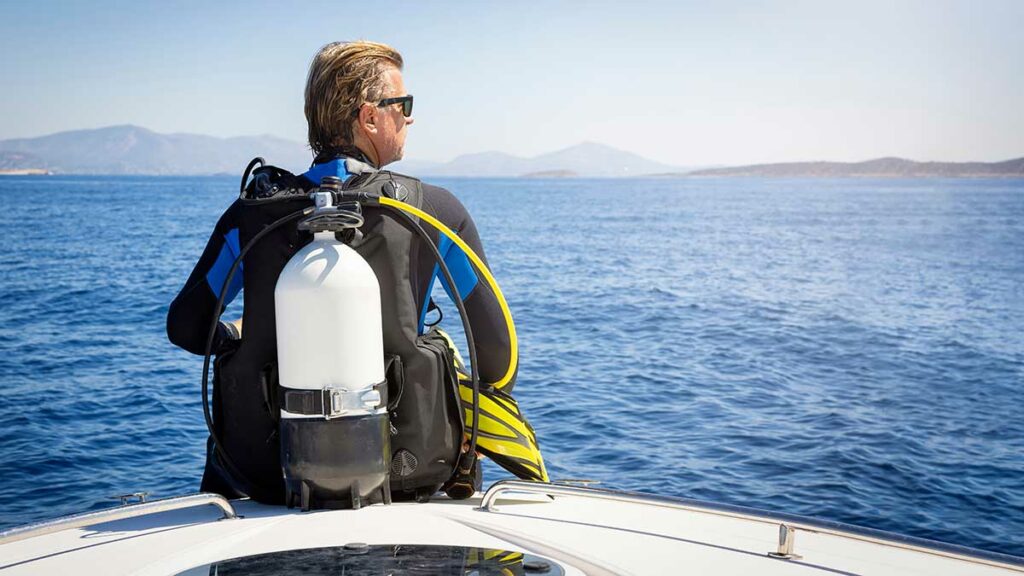
Care and Maintenance of your Buoyancy Control Devices (BCD’s)
Your BCD — an important part of your dive equipment, the unsung hero of your dive adventures — deserves regular love and care. After all, it’s not just about longevity; it’s about ensuring every dive is as safe and enjoyable as the last one. Here are some tips on how to care for your BCD.
1. Rinse After Every Dive
Imagine wearing the same socks after a marathon without washing them. Eww, right? Similarly, after each dive, ensure you rinse your BCD with fresh water. This simple act goes a long way in preventing salt, chlorine, and other nasties from corroding its materials.
2. The Inside Matters Too
Saltwater and contaminants can sneak their way inside your BCD. To clean the interior, inflate your BCD partially with fresh water using the oral inflator. Give it a good shake, and then drain the water out.
3. Store with Care
Once your BCD is all clean, don’t just toss it in a heap! Hang it up, preferably on a broad hanger to avoid stressing the fabric. And oh! Make sure it’s in a cool, dry place away from direct sunlight.
4. Check for Leaks
You wouldn’t want any surprise deflations underwater! Inflate your BCD and listen for hissing sounds or check for bubbles when submerged in water. If there’s a leak, it’s repair time.
5. Inspect the Dump Valves
Make it a routine to check your dump valves. Ensure they’re free from sand or debris. Occasionally, rinse them with fresh water while opening and closing to keep them in tip-top shape.
6. Love the Zippers and Fasteners
Zippers can often be the first to give you grief. Rinse them, and every now and then, apply a zipper lubricant. This keeps them sliding smoothly and extends their life.
7. Mind the Inflator
Your inflator mechanism is pivotal. Occasionally disconnect it, soak in warm water, and operate the buttons to clear out any salt or grit.
8. Professional Check-ups
Just as we sometimes need a doctor, our BCD occasionally needs a professional. Once a year or after every 100 dives, get your BCD serviced. Stop by Scuba.com’s stores in New York City or Costa Mesa — professionals will scrutinize everything, ensuring everything’s shipshape.
9. Store Without Stress
If you’re storing your BCD for an extended period, keep it partially inflated. This ensures that the internal parts stay in their natural position and reduces wear and tear.
10. Stay Alert
Lastly, always be alert to changes. If your BCD feels different or shows visible signs of wear, don’t push it. Safety first!
Our BCDs aren’t just equipment; they’re trusty sidekicks that keep us buoyant, safe, and exploring the depths with ease. Just a little TLC goes a long way in ensuring they stay reliable
Conclusion
The magical world of scuba diving gear is incomplete without the Buoyancy Compensator. The BCD is a marvel of dive engineering, combining safety, functionality, and comfort in one package. By understanding its components, you’re taking a step towards being a more informed and skilled diver.
Whether you’re a pro diver or just starting, always remember the importance of balance, both in life and underwater. So, next time you’re gliding with the turtles or exploring a coral maze, remember these buoyancy tidbits and enjoy every bubble-filled moment! Dive safe and have fun!


